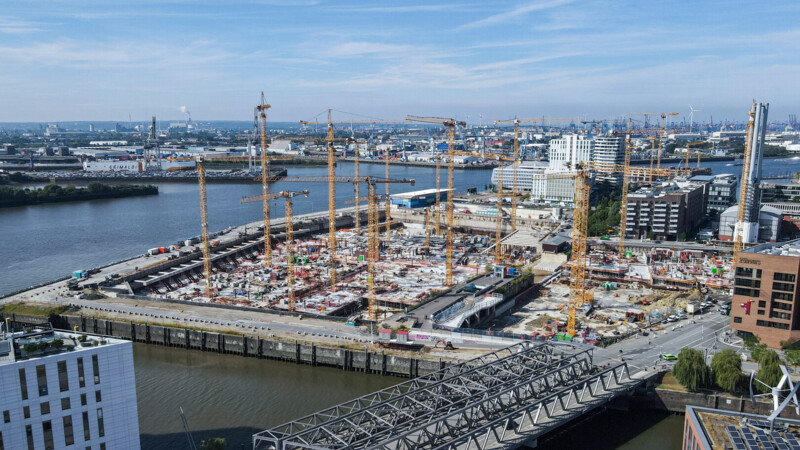At present, natural gas is used to reduce iron ore and produce DRI. During a transition phase, the reduction of iron ore will be demonstrated using hydrogen from the process gas separation plant in Hamburg. Green hydrogen, produced from the electrolysis of water with renewable energy, will be used when sufficient quantities are available at affordable prices. ArcelorMittal plans to produce more than one million metric tons of carbon-neutral steel per year by 2030 in Hamburg and saving around 800,000 metric tons of CO2 emissions annually.
The German government has earmarked EUR 55 million in funds to build Germany's first industrial-scale hydrogen-based Direct Reduced Iron (DRI) plant in Hamburg, pending the approval of the European Commission, Svenja Schulze, Germany's Minister for the Environment, announced Tuesday (September 7, 2021) during a visit to ArcelorMittal. The demonstration plant, which uses hydrogen as a chemical agent to reduce iron ore to DRI, will lay the foundation for steel production without CO2 emissions and using electric arc furnaces fed with green DRI and scrap and powered by renewable electricity. The total investment comes to EUR 110 million. Production is scheduled to start in 2025 and marks another milestone towards making Hamburg a European centre of hydrogen.
Zero-emission steel production with green hydrogen
Prerequisite: expansion of renewable energies
"Ever since mankind began producing steel, it has needed coal to do so. We are helping to ensure that this will be possible in future using hydrogen from wind and solar energy. The transformation of the steel industry is a huge challenge," said Schulze. If companies invest in greenhouse gas-neutral processes and products such as green steel, they will be able to survive on the market in the future, and jobs would be secure provided renewable energies are expanded, she added. This sentiment was echoed by Michael Westhagemann, Senator for Economics and Innovation, who spoke of "the task of the century", adding: "This is about achieving our climate protection targets within the set deadlines without jeopardizing Germany as an industrial and technology centre."
European Commission's approval
"We will be able to produce 100,000 metric tons of DRI for steelmaking using hydrogen as early as 2025 at the plant. Our project will help reduce greenhouse gases and achieve a low-carbon economy," said Dr. Uwe Braun, CEO of ArcelorMittal Hamburg. "The technology is directly transferable and shows how other steel mills in our group, for instance, in Bremen and Eisenhüttenstadt, can switch to climate-neutral steel production."
However, producing low-carbon or carbon-free steel is far more expensive than traditional steelmaking. Thus, the company is reliant on political backing. "The German government's provision of funds would help our project, for which we are very grateful. Now, we need the approval of the European Commission so that words are followed by deeds," Braun added. The plant is part of ArcelorMittal Germany's Steel4Future strategy, which would convert the plants in Hamburg, Bremen, Duisburg and Eisenhüttenstadt to zero-emission steel production in the coming years.
kk/sb/pb
Sources and further information
More
Similar articles

Future Hamburg Talk meets ... Dr Uwe Braun, CEO of ArcelorMittal

ArcelorMittal to become carbon neutral by 2050

Over 50 Hamburg-based firms to take part in Expo Real
